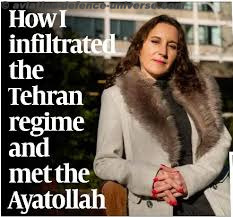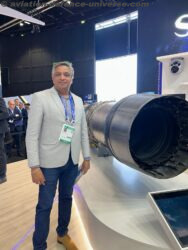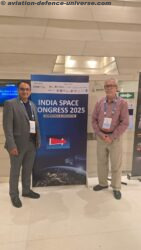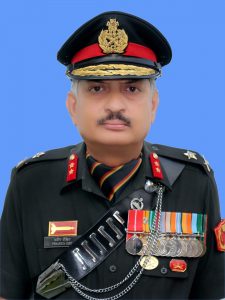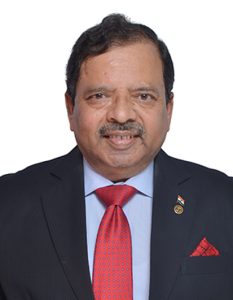
New Delhi. 21 December 2021. Hundreds of meters below the surface of the sea are any nation’s one of the biggest security assets, their submarines. These give the navies of the world their strike power and offensive capability. And India is no different. With a perpetual threat from the Indian Ocean, a geo-politically turbulent South China Sea and challenges in the Indo-Pacific, Indian Navy is taking strong steps to expand its undersea warfare capability.
Delhi based firm Insighteon Consulting ran a two day wargame on “ Future Dynamics Influencing Submarine Acquisition by India”. The Insighteon war-game covered the period from Year 2021 to 2026, by playing out each stalemate situation and strategic risks/opportunities that can arise concerning India’s submarine acquisition initiatives.
Aviation & Defence Universe (ADU) interviewed one of the participants of the war game – Commodore Mukesh Bhargava who has served as the Head of Submarine Design in the Navy and later as Senior Vice President with L&T Defence.
ADU. The French Defence Minister, Ms Florence Parly, was in Delhi recently. Contrary to press reports which state that the French Barracuda nuclear attack submarine offer will gain momentum, the Insighteon war game brings out that we are well on our way to develop SSNs and are likely to reject all offers less the select systems technology. In your individual capacity what is your view on this?
Cmde MB. At the outset, I wish to state that though the SSN was part of the War Game Scenario build-up for the overall “Factors Influencing Submarine Acquisition”, however, due to the sensitivities attached to the topic of SSN, the ex-Naval Officers participants were reluctant to discuss this subject, for security reasons. I would also, therefore, like to refrain from giving my detailed views on this topic. However, what is well known from published information, it is evident that India (DRDO, Navy and the Industry combined), having gained sufficient expertise in designing and constructing the strategic submarines over the past few decades, is fully capable and confident to meet the future requirements of the Navy, mostly with in-house capabilities itself. More so, I believe that there is a need for these platforms to be delivered in the fastest possible time, in the near future, considering the challenges faced by the Indian Navy in the Indian Ocean region. Therefore, in my view the MoD would like to stay with the existing acquired technology option for the SSNs, where sufficient experience has already been gained and all learning curves have been crossed, rather than experimenting with a newer technology no matter how attractive it may seem. Some minor help, if needed, related to the validation of the indigenous design, can always be sought. However, switching to a newer technology, would lead to another newer set of learning curves along with its accompanying delays, cost and time penalties, which the MoD could ill-afford.
ADU. There is a threat of a single OEM situation in the P 75 (I) project due to AIP conditions. Whereas the Insighteon war game brings out that the SPs are likely to have a choice of multiple OEMs to make their selection. Do you agree with this?
Cmde MB. The details of the RFP related to the requirements of the AIP are best known to the two SPs and the five OEMs / Technology Providers (TPs). In my view the SPs would have a choice of more than one TP for the Fuel Cell AIP, as the MoD has shortlisted the TPs/OEMs based on their response to the EOI which had clearly indicated Fuel Cell based AIP as an essential requirement. Even if the final RFP is seeking to have a Sea-Proven AIP, even for that more than one OEM are possible. All the short-listed OEMs have a technology demonstrator Fuel Cell based AIP operating in laboratories and some have plans for putting their technology proven AIP model to sea in the very near future.
ADU. The basis of making the SP model competitive was the government agenda of price discovery. The Insighteon war game however brings out that the SPs will give priority to their share-holders interests to protect their risks & liabilities, rather than negotiation of price. Therefore, will the competitive SP model fail to bring us a L1 product or the best submarine?
Cmde MB. In my view, we need to understand the concept of Strategic Partner as envisaged originally. The original SP Model was a well thought out concept with the strategic thinking of deep selection through multiple gates, like financial competence, technical capability, Infrastructure availability and track record, to finally shortlist one or two Private Companies as a SP. Having identified such a SP, the MoD had to trust this SP completely and explicitly, just as it does the DPSUs/OFs. This Strategic Partner Concept was sacrificed by tweaking this original process and making it a competitive limited tender, which this present model would never lead to creating a Strategic Partner.
As regards the risks and liabilities, the SP has to take a call and cater for the risks and liabilities in their price bid. The risks and liabilities have to either be mitigated or transferred else they have to be absorbed in the price bid. The higher the risks and liabilities mandated in the RfP, the higher would be the value in the price bids. Further, it would also depend on the comfort level of the TP/OEMs of accepting the risks and liabilities by the TP or OEMs as the SP, who would be submitting the final bids to the MoD, needs to also cater for the risks and liabilities from the OEMs perspective and build it in the final price bid. However, these factors would apply equally to both the SP contenders. The SP contender who can manage these best and in the most competitive manner would emerge as L1. The MoD would however get the L1 even though it may not be the cheapest price due to the appropriate loading to cover the risks and liabilities of the SP and the OEMs.
As regards the price discovery of the P75(I) is concerned. In my view this being the third time that the MoD is procuring SSK submarines, there are adequate models available to arrive at the reasonable price. In additional there are multiple international models available to realistically determine the price for a P75(I) project. So I do not subscribe to the view that the reason for making the SP model a limited competitive tender was to arrive at a price discovery. In my view, unfortunately it is the basic trust deficit in the Private sector which, contrary to the repeated assertions by the PM, still occupies the mind space of the bureaucrats and clouds their decision making,
ADU. The war-game brings out that lack of assured future orders disincentivizes the SP as well as the OEM. Do you think we need to change the SP model to cater for this?
Cmde MB. As mentioned in my reply to Q3, the original SP Model was aimed at creation of an Additionality in the Private Sector (In addition to the existing DPSU/OF) for creating an additional line for submarine construction. The reason being that the 30 years, 24 number Submarine Construction Plan of the Navy was getting inordinately delayed with the accompanying time delay and cost escalation penalties for the first 6 submarines under construction (P75 Project) at the DPSU. With the a total of 24 s/ms to be constructed, there was sufficient scope for the SP as well as the DPSUs both to get adequate quantities of future orders. (04 Sets of 06 S/m orders). By the end of the construction of the fourth set of the last 06 submarines, the P75 boats would be due for replacement. Thus the original SP model did consider the possibility of adequate future orders for the SP in addition to the DPSU yard. However, there are a few anomalies in the P75(I) as regards to the concept of a SP as originally planned as an Additionality, or the SP being the second line for submarine construction:
Firstly, the DPSU, which is already an existing SP to the MoD, is also included to compete with the private sector for the SP competition, which itself is self-defeating as the DPSU is already a SP for the MoD, for all practical purposes, getting nominated orders in the past and even now. Secondly, it creates an unequal or non-level playing field for the private sector contender for SP, as the DPSU has all its special infrastructure, acquired ToT for submarine construction, special construction jigs, tools and fixtures already paid for by MoD and does not have to load these costs in its price bid, unlike the private sector competing with it, which has to add these additional costs making it non-competitive against the DPSU. Thirdly, the MoDs objective to have a second line of construction in the private sector for faster execution of 24 submarine construction plan, gets defeated. Last but not the least it also does not support the PM’s directive that the MoD must leverage the strengths and competencies of the private sector by encouraging them and promoting them to attain Atma Nirbharta in Defence/ submarine construction.
Therefore, in my view to attain true Atma Nirbharta in the Submarine construction, it is essential that the SP model need to consider all these points and make the relevant changes to the SP Model to make it a success.
ADU. The wargame brings out a finding that the user should be part of the selection process of the OEMs with the SPs. What is your opinion on this? Will this not need an amendment to the SP Policy?
Cmde MB. Some participants in the War Game felt that the industry is not capable to select the OEM as a partner for the SP Model and therefore the user must be part of selection of the OEM along with the SP. However, I do not agree with this view for the following reasons: Firstly, both the SPs have been involved in submarine construction for more than two decades at least, and are therefore adequately competent to select the best partner for the P75(I) Program. Secondly, in any case if the MoD/user is involved in the selection process, then the MoD cannot hold the SP responsible for the performance, quality and delivery schedule of the P75(I). I would recommend the changes to the SP Policy to be done as recommended in my replies to the Q3 and Q4. The selection of the SP should be done first through numerous gates as recommended by Dhirendra Singh’s Committee. Once the SP is selected, then the MoD must trust it explicitly and treat it at par with the DPSUs/OFs for all purposes to make it a true Strategic Partner. Thereafter, the MoD and SP should jointly sit on one side of the table and negotiate the best ToT, construction philosophy and price with all the five OEMs to ensure that the SP gets only those ToT that is needed to plug the gaps in their existing capabilities rather than those that the OEM is comfortable to share.
This will make the SP fully self-reliant for future submarine design and construction programs. Only then can the private industry rise to the occasion and become a true Systems Integrator and creator of Systems of Systems Manufacturer in India in addition to the DPSUs and OFs as the second line of construction of Complex technology platforms.
ADU. How do you think such wargames will benefit the policy makers and OEMs?
Cmde MB. The War Game had some of the best and most qualified participants, having enormous experience and knowledge. The two days long hours of brain storming resulted in creation of some very useful and practical solutions to the possible problems that the SP process might face.
The sharing of these insights, solutions and recommendations can prepare the policy & decision makers to put the War Game’s recommendation in the SP process and prevent the possible glitches or hiccups that were envisaged by the War Game Control and prevent them from happening, well ahead of time. The decision makers can proactively start making changes in the SP model approach to make the whole process having a much higher probability of success. The recommendations from the War Game could also help in improving the issue of subsequent EOI/RPFs for future SP programs e.g. Helicopters, Fighter Aircrafts and Armoured Fighting Vehicles.
As regards the OEMs the War Game has created a wealth of information which could make them re-consider their approach toward bidding, sharing of ToT, getting clearances from their MoDs for the mandated ToTs well ahead of time and partnering with the SPs in a much better way than they would have done it otherwise.
ADU. Can you brief us on what you felt on the conduct of the war game?
Cmde MB. The War Game was conducted by Lt Gen Dixit and Col Rajiv Chib in the Most professional manner. It clearly demonstrated the enormous amount of hard work that had been put in by them in creating the scenarios, selecting the participants, allocating them the most appropriate roles and responsibilities which made the war Game full of technical expertise and very engaging. The scenarios that were injected by the Control Team were very realistic and plausible which made the participants deeply engrossed and thus offer solutions which they felt were the best in the given circumstances. Overall the two-day War Game was extremely interesting and threw up some very realistic scenarios that were challenging at the same time most interesting. Complement to Team Insighteon. More Power to the Team.
As told to ADU.














